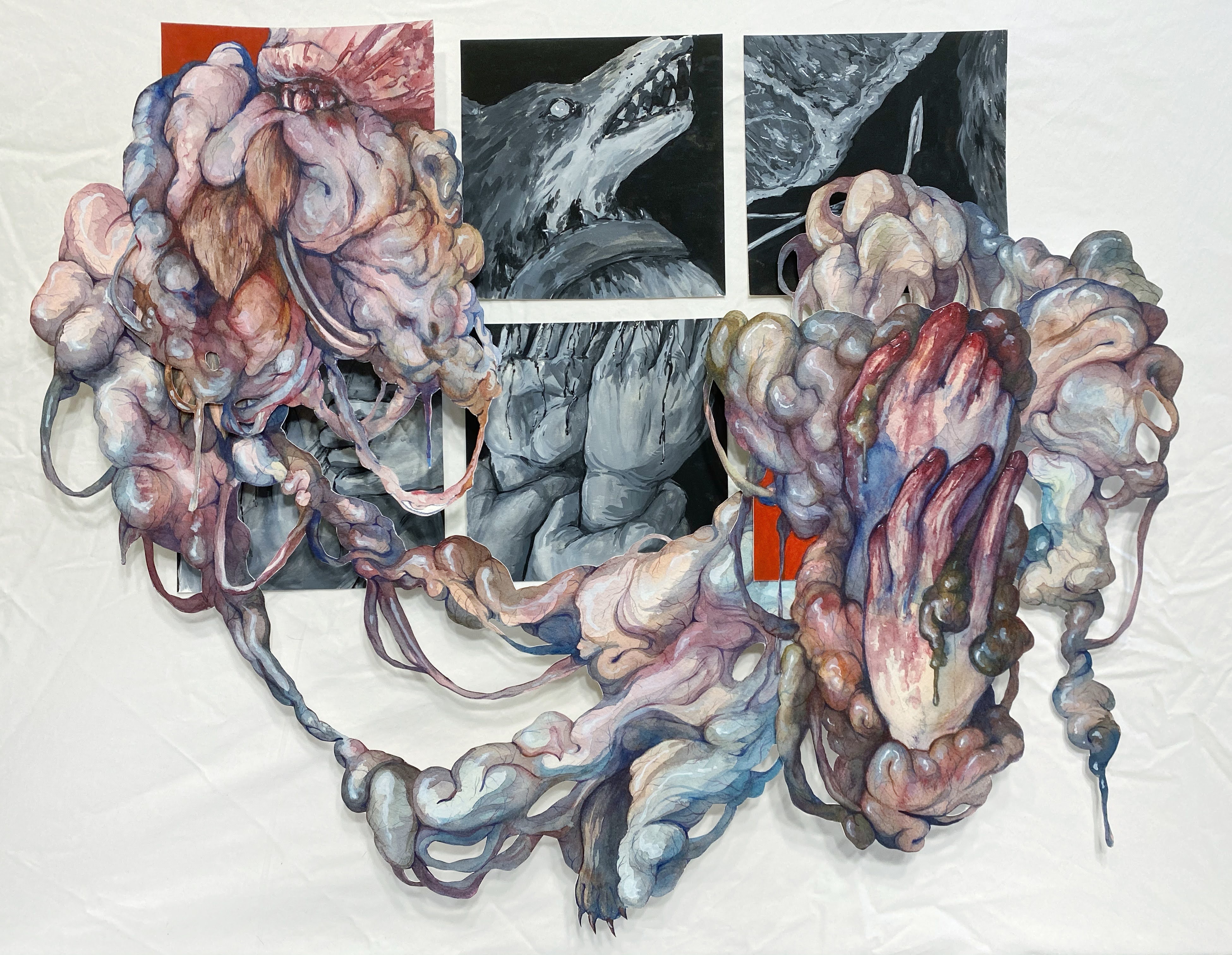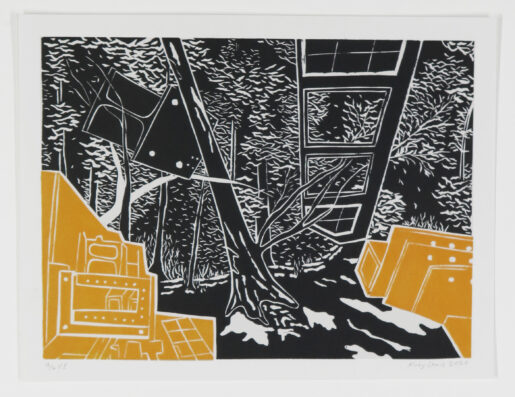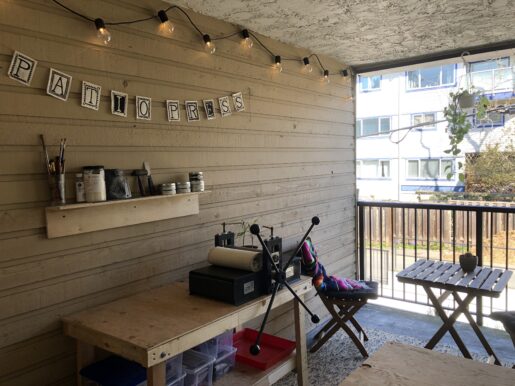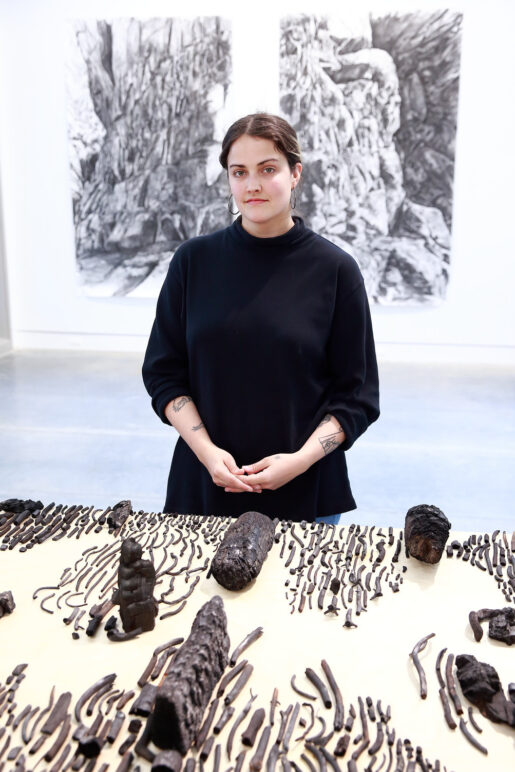Remote Learning Brings Fresh Insight for Students of Artist Sara-Jeanne Bourget

Posted on | Updated
Sensitivity to place and material infused the work of a pair of students studying drawing under the artist and ECU faculty member.
Closer attention to immediate surroundings and a deeper appreciation for the communicative power of the everyday are two key takeaways reported by students in a recent online drawing course taught by artist and ECU faculty member Sara-Jeanne Bourget.
The ‘DRWG 309 SU90: Drawing: Narrative Images’ online-only summer course wrapped in June, and will be starting up again under Sara-Jeanne’s instruction come the Fall semester.
Nastenka Alava, one of the students who took the course this summer, says she looked to her relationship to the area she lives as a thematic touchpoint for nearly all her class exercises.
“Living beside Burnaby Mountain is a gift, and an infinite source of inspiration,” Nastenka says of her home, adding that with Sara-Jeanne’s help, she developed a keener eye for the evocative potential of place, and of the materials she uses for artistic exploration.

“I was able to delve deeper with the encouragement of Sara-Jeanne. [The process] brought on newly discovered notions of narrative drawing, where even the materials we use … have a meaning and story of their own that pushes the overall narrative of the subject to an even greater extent.”
Brontë Sobotka, another of Sara-Jeanne’s students, says the class helped her step outside the comfort zone she’d established as a longtime illustrator — an opportunity she welcomed during a summer of lockdown isolation.
“I usually create works that focus more on straightforward explorations of external subject matter,” Brontë says. “‘Narrative Drawing’ really allowed me to stray away from this comfortable territory for my art. Being stuck at home also meant that I was extremely aware of the locations and people I was interacting with all day, every day, and made focusing on these interactions — and the narratives at play in my immediate surroundings — feel relevant to both my own life and the general experiences most of us have been having as a whole during self-isolation.”
For Sara-Jeanne, these accounts reflect an approach to art practice she herself has long been cultivating.

“I always put emphasis on materials, on the importance of knowing them, of developing a relationship with your mediums through drawing,” she says, adding the realities of lockdown bestowed a particular urgency to this process.
“Since materials were limited, it was a great opportunity for students to carefully and mindfully use their materials as a gateway to create meaning … Being restricted to your own personal space, with limited materials, will indubitably make you think twice about the kind of project you want to make, its durability and storage possibility. It also was interesting to see how drawings could exist in domestic spaces — some students used their windows as support for their drawings, or as light tables!”
Brontë says she digital display opened up new possibilities for her — a surprisingly welcome relief from some of what she sees as the limitations of gallery exhibition.
“I think one of the most exciting advantages that came from online learning for this class was the ability to use the methods of digital presentation when displaying a piece,” she says, noting gallery displays often require hours to arrange, and are more geared toward traditional media such as painting or sculpture.
'Living Spaces,' Digital 3D Sculpture and Blind Contours, by Brontë Sobotka. 2020.
“Uploading a digital representation of a work, on the other hand, is much more effective for digital works. The digital screen itself is a unique gallery space that opens up many new avenues of thought and exploration that would be unavailable in a traditional physical display style. There were many pieces created by my classmates that I don't think would have been considered without this digital presentation.”
And Nastenka, despite missing the sense of intimacy that comes with in-person viewing of her classmates' work, says that like Brontë, online learning brought a renewed sense of agency.
“An unexpected advantage in my case, as someone who is generally quiet in critiques, is I felt it was easier to ‘speak up’ — give my immediate thoughts and constructive feedback to my peers’ work — through a written format,” she says. “I was also able to spend more time with their artworks, visually describing what I was seeing, engaging with them through the screen and connecting them to the theme of the assignment.”
Sara-Jeanne’s own experience of art practice during lockdown was influential in her thinking around how to provide instruction to her students; the Patio Press virtual residency, begun by Sara-Jeanne with her partner, artist Mark Johnsen, from their patio in East Vancouver, gave her space to work out the fundamentals around how to engage remotely.
“[Patio Press] was key to understanding ‘working online;’ how to collaborate online, keep connected with the community online, work from home, what materials are accessible, etc.,” she says, noting an early insight was the degree to which she and Mark found themselves craving in-person interaction with their peers and their works — a craving she notes students likewise reported.
With that in mind, she took a cue from Patio Press — wherein an exchange of material and work is conducted by mail —and began rethinking how remote collaboration could foster a sense of community amongst her physically isolated students.
“I now see the opportunity to create even more connection with each other through ‘correspondence,’” she says. “It could take form as an exchange of letters between students, or emails, drawing, doodles, texts, sounds, images and more over an extended period of time (all semester perhaps). I am rethinking/extending timelines for students and wanting to give them more space to think about drawing and narratives, as well as sharing. I want to foster a space for exchange and storytelling. I am really hoping to find a sense of online togetherness.”
Sara-Jeanne and Mark are currently looking at ways they might more closely merge Patio Press with their teaching practices, including a possible series of fellowships for ECU students which would bring recipients into direct collaboration with the virtual residency.
Sara-Jeanne will teach her ‘Drawing: Narrative Images’ course again, beginning in September, 2020.


